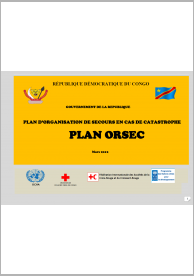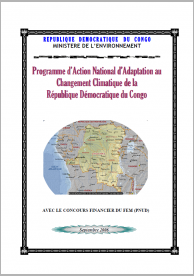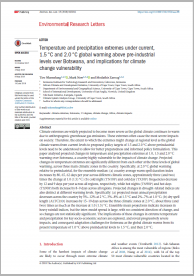
This Strategy is divided into nine priority axes which are:
The following is a list of all conten labeled as "Climate Change"

This Strategy is divided into nine priority axes which are:

The ORSEC PLAN is intended to be a first step and a very important step in the perspective of the constitutional response to the question of national emergencies, constituting for the government a first-hand tool allowing it, not only, to know who is responsible for what task in case of which circumstance, but also the modality of activation of it and the coordination of intervention activities

The objective of the NAPA Project to be proposed by the DRC is to develop a program covering the whole country and identifying urgent and immediate adaptation activities which respond to the current and anticipated harmful effects of climate change, including extreme events.

This activity report summarizes activities of Result Area 5, also known as the Africa Disaster Risk Financing (ADRF) Initiative from July 1, 2017 to June 30, 2018.The report provides an overview of the achievements to date and identifies upcoming priorities and challenges.

This profile provides an overview of climate risks in Madagascar, including how climate change will potentially impact three key sectors in the country: agriculture and livelihoods; health and nutrition; and water, sanitation and hygiene (WASH).

The National Country Assessment aims to provide the Government of Madagascar and national partners interested in these subjects with an information base to better know and understand the link that exists in the country between migration and environmental changes, including climate change.

The overall objective of the contingency plan is to support the Comorian government in order to set up a real-time and coordinated response in order to minimize the humanitarian consequences of disasters on the populations.
The following strategic objectives constitute the basic interventions planned under this contingency plan:

Provides national authorities and partners with a reference tool to better prepare and manage emergency situations.

The preparation of the second communication from the Comoros on climate change was coordinated and supervised by the Directorate General of Environment and Forests (DGEF) in collaboration with the focal point of the UNFCCC and the General Secretariat of the Ministry in charge of Production, Environment, Energy, Industry and Handicrafts.

This paper analysed projected changes in temperature and precipitation extremes at 1.0, 1.5 and 2.0 °C warming over Botswana, a country highly vulnerable to the impacts of climate change.